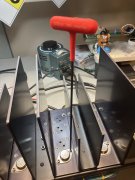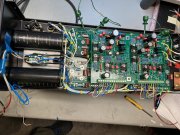Ready to get this 400 up and running, This is my first WOPL so it seemed to take forever to read, research and try to understand what I am doing. I have tried to emulate what others have done and I appreciate the fine craftsmanship that I am attempting to copy. I tested for shorts to chassis so I am on to step # 12, Wish me luck !




